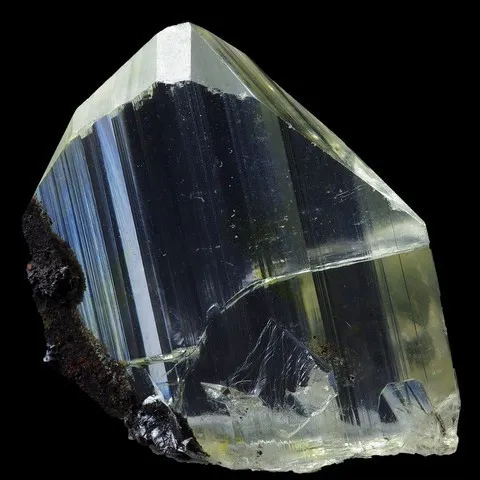ANGLESITE
Class : Sulphates, molybdates, chromates
Subclass : Anhydrous sulphates
Crystal System : Orthorhombic
Chemistry : PbSO4
Rarity : Common
Anglesite is a secondary mineral in the oxidation zone of lead deposits that forms under acidic conditions. When the environment becomes basic, it disappears in favor of cerussite. It is formed by alteration of the galena which can subsist in the middle of the masses, the anglesite is associated with other oxidized minerals of lead and zinc (smithsonite, cerussite, hemimorphite) and sulphides (galena, sphalerite, etc...). Anglesite owes its name to its place of discovery, the island of Anglesey in Great-Britain. The crystals are generally thick to elongated but very rarely acicular, reminiscent of those of barite, they are frequently tabular and flattened according to the cleavage. Anglesite is also massive, concremented, stalactitic or nodular. It has a high density greater than 6.3, it is transparent to translucent to adamantine luster, almost metallic. It can be colorless, greyish-white, sometimes tinged with yellow, green, blue, it can be black due to inclusions of galena. It is a highly sought after mineral, gemmy and well-formed crystals are not common, crystallized specimens are sought after by mineral collectors. It may constitute an accessory ore of lead, in some Cevennes deposits especially (Le Bleymard, Saint-Felix-de-Pallières).
Anglesite in the World
Anglesite in France
Twinning
No known twin for this mineral species.
Fakes and treatments
No fake inventories for this species.
Hardness : 2.5 to 3
Density : 6.3
Fracture : Conchoidal
Streak : White
TP : Opaque to transparent
IR : 1.878 to 1.895
Birefringence : 0.017
Optical character : Biaxial +
Pleochroism : Very weak to none
Fluorescence : White-yellow
Solubility : Concentrated nitric acid
Magnetism : None
Radioactivity : None

